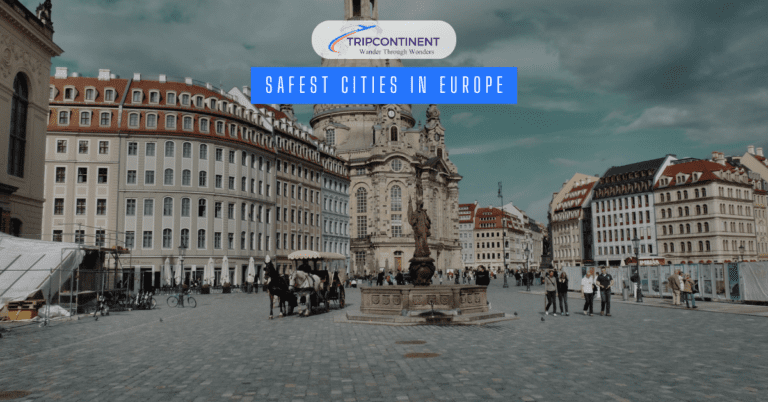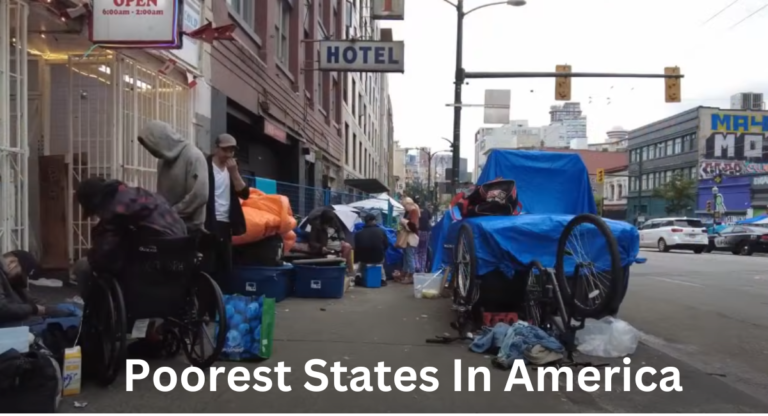Top 10 Most Educated States in the US in 2024
In the United States, education is a cornerstone of personal and economic growth, and some states distinguish themselves by their exceptional levels of educational attainment. These states lead the way, with a significant proportion of their populations holding advanced degrees, underscoring a commitment to academic excellence. This strong educational foundation not only enhances individual career prospects but also contributes to broader economic resilience and innovation.
By fostering a highly educated workforce, these states play a pivotal role in shaping the nation’s future. Let’s take a closer look at the top most educated states in the US and what sets them apart.
List of the Most Educated US States
Below is a list of the ten most educated US States.
- Colorado
- Massachusetts
- Vermont
- Minnesota
- Maryland
- New Hampshire
- New Jersey
- Virginia
- Connecticut
- Washington
1. Colorado
Colorado has a robust and prestigious educational system, from early childhood education through higher education, offering students abundant opportunities for growth and achievement. The state has made considerable progress in boosting higher education attainment among its residents, largely driven by a strong K-12 education system.
Over 90% of residents in Metro Denver and Northern Colorado have completed high school, reflecting the state’s commitment to educational excellence. Colorado’s high school students perform well on college entrance exams, with average ACT scores of 23.7 and SAT scores of 1012, indicating strong preparation for higher education.
Despite these successes, Colorado grapples with achievement gaps among racial and ethnic groups. For instance, 8th-grade science scores reveal significant disparities, with Asian, White, and Two or More Races students outperforming Black and Hispanic students by 23-36 percentage points.
State authorities are actively working to close these gaps and enhance educational outcomes for all. The Colorado Rises strategic plan targets increased student completion rates and aims to eliminate equity gaps for African American or Black, Hispanic or Latinx, and American Indian and Alaska Native students by 2025. Additionally, the state has invested in initiatives supporting underserved communities, striving to increase the number of residents with higher education credentials.
Also read: Most Corrupt States in the USA
2. Massachusetts
Massachusetts stands as a beacon of educational excellence in the United States. Nearly 60% of its population holds a post-high school credential, making it one of the most educated states in the nation. This achievement is a testament to the state’s robust commitment to higher education, driven by ambitious goals set by its higher education department. By 2030, Massachusetts aims for 60% of its working-age population to have at least an associate degree.
However, despite these high overall attainment rates, significant achievement gaps persist. For instance, while 65% of White males possess an associate degree or higher, only 22% of Latino males reach this level of education. Recognizing these disparities, the Massachusetts Department of Higher Education has prioritized equity in its strategic planning. The state is actively collaborating with public colleges and universities to develop a comprehensive framework aimed at closing these gaps, particularly for African American and Latino students.
This initiative includes a data-driven approach to performance measurement, ensuring progress is tracked and adjustments are made as needed. By addressing these inequities, Massachusetts continues to strive toward a more inclusive and equitable educational landscape, reinforcing its role as a leader in academic achievement.
3. Vermont
Vermont is widely recognized for its commitment to education. It ranks among the most educated states in the United States, with an attainment rate approaching 59%. A key factor in Vermont’s educational success is its strong public school system, characterized by a low pupil-to-teacher ratio, which fosters personalized learning and better student outcomes. The state’s significant financial investment in education, reflected in high levels of funding and resources, has resulted in consistently high school graduation rates exceeding 90%.
Additionally, Vermont leads the nation in student health support, boasting the highest ratio of school nurses to students, which underscores its dedication to student well-being. Vermont is also focused on aligning educational outcomes with workforce needs, setting an ambitious goal of achieving 70% post-secondary education attainment by 2025. This initiative emphasizes the importance of credentials that meet the demands of the state’s evolving job market.
With a strong educational infrastructure and a clear strategic vision, Vermont is poised to continue its legacy of academic excellence and ensure that its residents are well-prepared for future economic and social challenges.
4. Minnesota
Minnesota has a significant proportion of its adult population with higher education degrees. This achievement is remarkable, especially considering the state’s rapidly growing and increasingly diverse population. To further enhance educational attainment, Minnesota has set an ambitious goal: by 2025, it aims for 70% of its adult population aged 25-44 to hold a post-secondary certificate or degree. This goal aligns with broader efforts to equip Minnesotans with the skills necessary for success in the modern economy.
The state offers a unique advantage through its online schools, which provide flexible and personalized education options. These institutions cover a wide range of subjects, from core academics like math and English to specialized electives such as world languages and art.
Minnesota is also home to prestigious higher education institutions, including the University of Minnesota and private colleges like the University of St. Thomas. These institutions, along with the state’s robust network of community colleges, offer diverse programs ranging from associate degrees to doctoral and professional certifications.
Despite these achievements, Minnesota faces challenges in educational equity. The state has some of the largest achievement gaps in the nation, with disparities in test scores, graduation rates, and college readiness among different racial and socioeconomic groups. To address these issues, Minnesota has implemented initiatives focused on enhancing school quality, supporting students and families, and providing schools with the autonomy to develop locally relevant programs.
5. Maryland
Maryland ranks among the top ten most educated states in the United States, reflecting its strong commitment to fostering a well-educated population. According to the US Census Bureau, approximately 22.4 percent of Maryland residents aged 25 and over possess a bachelor’s degree. However, this educational attainment is not uniformly distributed across the state, with Western Maryland and the Eastern Shore reporting lower figures.
The educational landscape in Maryland is notably diverse. Over 60% of Asian residents hold at least a bachelor’s degree, compared to 46.3% of White residents and 30.0% of African Americans. This diversity is also present in the state’s schools, which serve a wide range of cultural and ethnic backgrounds.
Maryland’s commitment to quality education is evident in the performance of its schools, many of which consistently earn top ratings. However, there has been some fluctuation in these ratings in recent years, reflecting ongoing challenges in maintaining high standards.
Despite its achievements, Maryland faces significant challenges in addressing educational disparities influenced by race, gender, and economic factors. These disparities highlight the complexity of the state’s educational environment and underscore the need for continued efforts to ensure equitable access to quality education for all students.
You might also like: Most Rich States in the USA
6. New Hampshire
New Hampshire ranks among the most educated states in the United States, with 28.1% of its population aged 25 and over holding a bachelor’s degree or higher. The state’s educational attainment has been on a steady rise, supported by a robust mix of public and private institutions. The University System of New Hampshire is the largest provider of post-secondary education, complemented by prestigious private institutions like Dartmouth College.
The quality of public schools in New Hampshire is generally high, with significant state funding contributing to a strong educational infrastructure. The state ranks among the top in the nation for per-pupil spending, reflecting its commitment to education. However, challenges persist, including achievement gaps across racial and gender lines. For instance, the high school graduation rate in New Hampshire stands at 88.5%, but there is a notable disparity between white students (91.4%) and students of color (74.1%).
Furthermore, there is a gender gap in higher education attainment, with 34.4% of males holding a bachelor’s degree or higher compared to 29.4% of females. Despite these challenges, New Hampshire is actively working to address these disparities through initiatives focused on diversity, inclusion, and support for low-income students, aiming to enhance educational outcomes for all residents.
7. New Jersey
New Jersey is known for its highly educated population and ranks among the top states in the United States for educational attainment. Approximately 40% of New Jersey residents aged 25 and over hold a bachelor’s degree or higher, reflecting the state’s strong commitment to education. The state’s education system is robust, featuring a mix of public and private schools, colleges, and universities. Notably, New Jersey boasts some of the nation’s top-rated public high schools and prestigious higher education institutions, including Princeton University and Rutgers University.
New Jersey’s public schools consistently rank among the best in the country, supported by substantial state funding that ensures high-quality education. The state invests heavily in education, with one of the highest per-pupil spending rates in the US. This investment contributes to strong academic performance and high graduation rates across the state.
However, like many states, New Jersey faces challenges related to educational equity. Achievement gaps persist between different socioeconomic and racial groups. For instance, while the overall high school graduation rate is commendable, disparities exist, particularly affecting students from economically disadvantaged backgrounds.
To address these challenges, New Jersey has implemented various initiatives aimed at closing achievement gaps, increasing access to quality education, and supporting underserved communities. The state’s ongoing commitment to education makes it a leader in academic excellence and innovation.
8. Virginia
Virginia is one of the most educated states in the United States, with a strong emphasis on both K-12 and higher education. Approximately 39% of Virginians aged 25 and older have a bachelor’s degree or higher, showcasing the state’s commitment to academic achievement. Virginia’s education system is notable for its high-quality public schools and a range of prestigious higher education institutions, including the University of Virginia, Virginia Tech, and George Mason University.
The state’s public school system is highly regarded, with many schools receiving national recognition for academic excellence. Virginia invests heavily in education, with significant state funding allocated to ensure that students receive a comprehensive and high-quality education. This investment results in above-average standardized test scores and a high high school graduation rate.
However, Virginia also faces challenges, particularly concerning educational equity. There are noticeable disparities in academic achievement and access to resources among different racial and socioeconomic groups. The state is actively working to address these issues through various programs and initiatives aimed at providing equal opportunities for all students.
Virginia’s strong emphasis on STEM (Science, Technology, Engineering, and Mathematics) education prepares students for a competitive workforce, contributing to the state’s robust economy. The state’s commitment to education, combined with its efforts to bridge achievement gaps, continues to make Virginia a leader in academic excellence.
9. Connecticut
Connecticut is renowned for its high level of educational attainment, making it one of the most educated states in the United States. Nearly 40% of its adult population holds a bachelor’s degree or higher, reflecting the state’s strong emphasis on academic excellence. Connecticut is home to a number of prestigious institutions, including Yale University, Wesleyan University, and the University of Connecticut, which are known for their rigorous academic programs and research contributions.
The state’s public school system is well-regarded, with Connecticut students consistently performing above the national average on standardized tests. The state has a relatively low student-to-teacher ratio, allowing for more personalized attention and support for students. Additionally, Connecticut invests heavily in education, with one of the highest per-student spending rates in the country, ensuring access to quality resources and facilities.
Despite these strengths, Connecticut faces challenges related to educational equity. There are significant disparities in academic achievement and access to quality education across different racial and socioeconomic groups. The state has implemented various initiatives to address these gaps, such as increasing funding for underperforming schools and expanding access to early childhood education.
Overall, Connecticut’s commitment to education and its high standards make it a leader in academic achievement, while its efforts to promote equity continue to evolve.
Also see: Megachurches In The USA
10. Washington
Washington is widely recognized for its strong educational system, contributing to its status as one of the most educated states in the US. Approximately 37% of Washington residents aged 25 and older hold a bachelor’s degree or higher. The state’s commitment to education is reflected in its diverse range of high-quality public and private institutions, including the University of Washington, Washington State University, and several leading community colleges.
Washington’s K-12 education system is notable for its emphasis on high academic standards and innovation. The state consistently ranks well in national assessments, with students performing above the national average in reading and math. Additionally, Washington has invested significantly in education, with a focus on enhancing student learning and closing achievement gaps.
However, Washington faces challenges related to educational equity. There are notable disparities in academic performance and college readiness among different racial and socioeconomic groups. The state has initiated various programs to address these issues, including increasing funding for schools in underserved areas and implementing strategies to support students from diverse backgrounds.
Washington’s dedication to improving educational outcomes and its investment in both higher education and public schools reflect its ongoing efforts to maintain and enhance its reputation as an educational leader.
Final Words
In conclusion, the most educated states in the US demonstrate a strong commitment to academic excellence, each contributing uniquely to the nation’s educational landscape. While challenges such as achievement gaps persist, efforts to address these issues reflect a broader dedication to improving educational opportunities for all. As these states continue to innovate and invest in education, they pave the way for a more knowledgeable and skilled future workforce, ultimately benefiting the entire country.
FAQs
Is the US Education System Effective?
The United States is renowned for its strong education system, often ranking among the top globally. Education in the US is primarily funded through state and local taxes, ensuring a broad range of resources and opportunities for students. Compulsory education begins around age five and continues until at least age sixteen, though specific requirements can vary by state. This system provides a solid foundation and diverse educational options, contributing to its high international standing.
Which State Offers the Best Study Opportunities in the US?
California, New York, Minnesota, Colorado, and Massachusetts are among the top states for higher education in the US. They offer excellent academic programs, diverse environments, and ample opportunities for students.
What Is the Most Affordable State for Higher Education in the US?
Florida is considered the most affordable state for higher education in the US, offering lower tuition costs and a range of budget-friendly living options for students.
Which State Has the Best Universities?
California stands out as the state with the best universities in the US, having the highest number of top-ranked institutions. It is home to prestigious universities such as Stanford University, Pomona College, and the California Institute of Technology (Caltech). With a vast array of renowned colleges and cutting-edge research facilities, California offers exceptional educational opportunities across various fields.
What Is the Most Expensive College in the United States?
Kenyon College holds the title of the most expensive college in the United States, known for its high tuition and associated costs.

I’m Sophia Jones, an adventurer at heart from New York City, USA. I live for travel and exploration, always eager to discover new places, meet fascinating people, and try out diverse cuisines. Over the past few years, I’ve traveled to numerous countries, immersing myself in different cultures and creating unforgettable memories.






